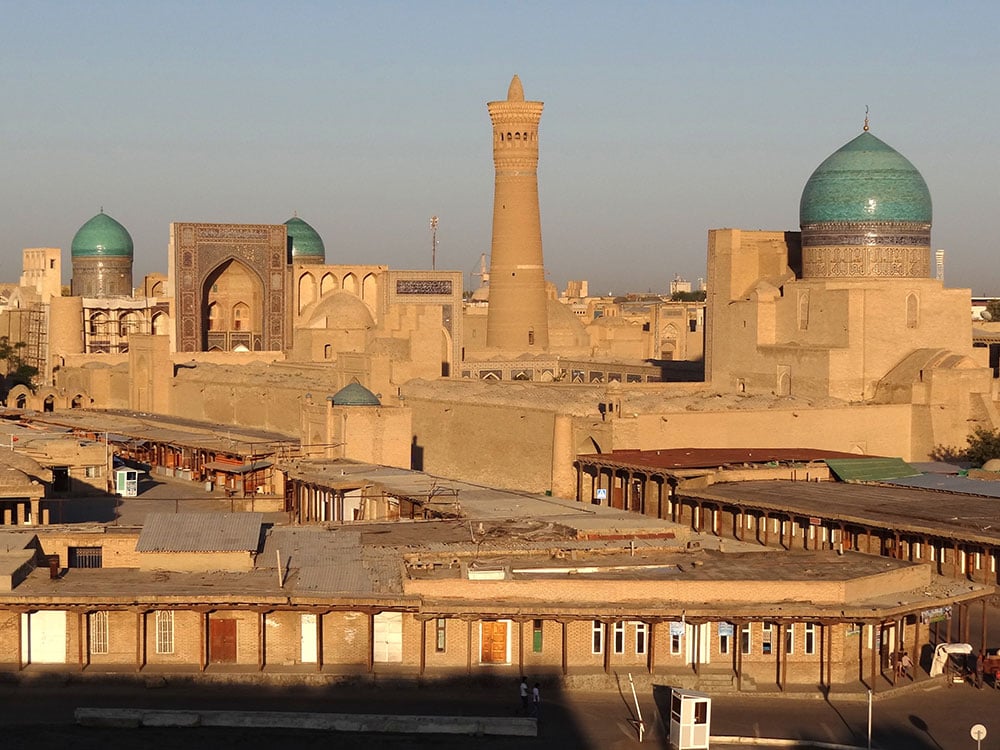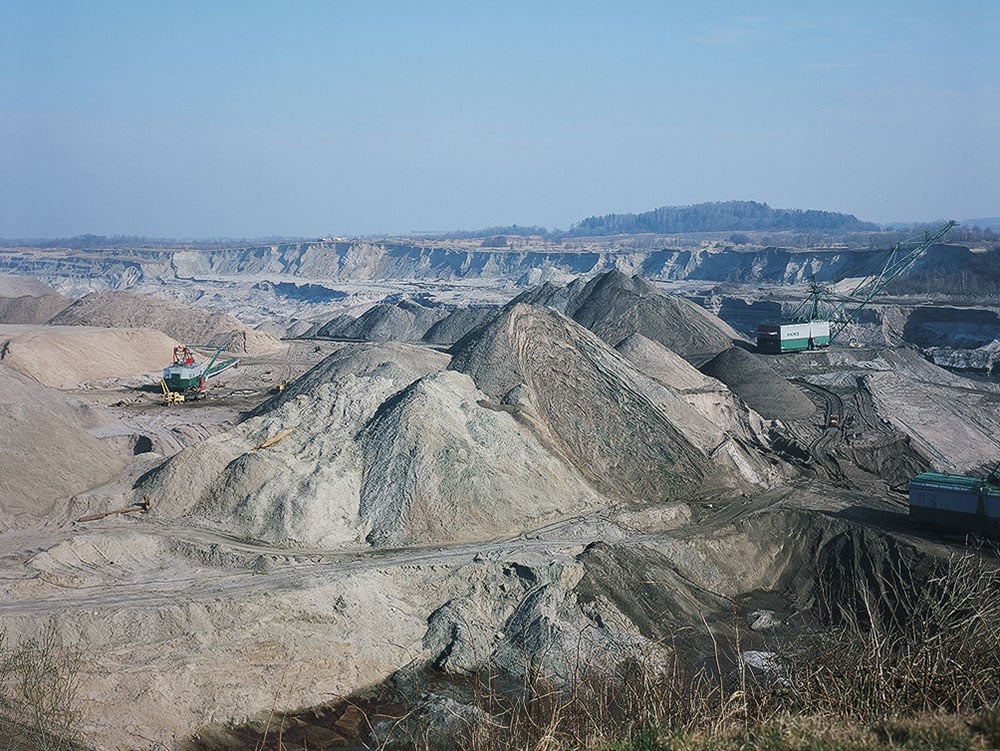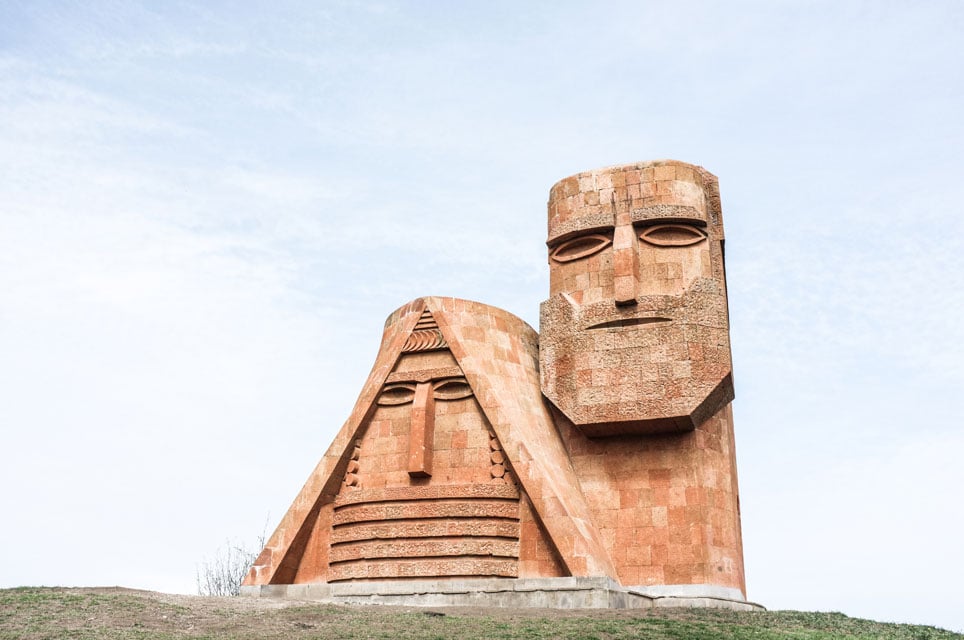Taking the waters: how to kick back at a Soviet-era health spa in Tajikistan
Unlikely Escapes in the New EastMaryam Omidi tries to avoid radon treatments at a Central Asian sanatorium
Nothing quite prepares you for your first sighting of Khoja Obi Garm, a Soviet-era sanatorium nestled in the mountains on the southern slope of the Gissar Range in Tajikistan. The colossal concrete structure, which is 2,000 metres above sea level, could not be more out of place, its size and brutalist style at odds with the snow-dusted peaks that surround it; a juxtaposition that I can only imagine is sharpened when winter ends and the powder is replaced by a lush carpet of trees. Picture one of London’s many hulking council estates sitting atop a Swiss mountain and you’ll have some idea of the scene that awaits you at the end of your skywards drive from the village of Varzob.
The drive from Dushanbe, the Tajik capital, is tear-inducingly spectacular. The road slices through dramatic mountain scenery on either side, blighted only by the garish dachas that are dotted along the way, showpieces for Dushanbe’s well-heeled. Most conspicuous is the palatial dacha-complex that belongs to President Emomali Rahmon, which runs along the side of the road in Varzob in plain view both of the drivers zipping past and the shepherds tending their flocks. Located on a rock fault, Khoja Obi Garm, a little further up from Varzob, is known for its curative, radon-filled waters, which draw visitors from across Tajikistan looking for respite and relaxation. For the equivalent of £13 a night, guests receive full room and board as well as use of the resort’s facilities. It’s more Butlins than Champneys but in a country where, according to the ILO, the average wage in 2012 was $2,700 a year, £13 is not an insignificant sum.
Once settled into my room, which unlike the rest of the sanatorium had undergone a recent makeover, I headed straight to the doctor for a therapeutic programme tailored to my needs. A man in a white coat and a fez-shaped hat proceeded to do a routine check-up. “Do you have a husband?” he asked while taking my blood pressure, in what I assumed was idle chitchat. After a week in Tajikistan I had grown accustomed to this question, which was among the top three asked even before clearly insignificant details such as my name. When I replied that I was single this was usually followed by a look of pity; when I revealed my age, pity would turn to horror, occasionally accompanied by the statement that most Tajik women were married by the age of 20.
Photo: Carolyn Drake
“What about children?” the doctor continued.
“No,” I replied.
“Hmmm…that means certain treatments are off limits to you,” he said.
“What kind of treatments?” I asked.
“For example, one which involves a high-pressured jet of water between your legs,” he said.
“Ohhhhh,” I replied, finally getting the gist of his questioning and disappointed that I would miss out on what the sanatorium’s brochure described as “hot treatment radon water sprinkling method between legs” (yep, that’s radioactive radon). I comforted myself with the thought of the many other treatments I could fill my days with, such as the ominously-named “electrical hot chair” and “friction and shaking with medical electrical equipment”.
I comforted myself with the thought of the many other treatments I could fill my days with such as the “electrical hot chair” and “friction and shaking with medical electrical equipment”
But I had plenty of time for those therapies, so instead headed straight to the thermal pool, which was sex-segregated along with other communal activities such as the sauna. There I was greeted by a bevy of Tajik women, au naturel, their pendulous bosoms bobbing up and down in the water, their smiles flashing gold teeth. I would spend the next few days with these women, swimming in the pool and sweating it out in the sauna, trying to get by in Farsi while they spoke to me in Tajik, a language of Persian descent but shaped by both Russian and Turkic influences over the years.
Online reports vary as to when exactly Khoja Obi Garm was built, anywhere from 1935 to 1983. The sanatorium is one of a handful that remain in Tajikistan with many more sprinkled across the post-Soviet space in varying states of decay. Their construction began after Lenin’s 1920 decree “On utilising the Crimea for the medical treatment of the working people” and continued right up until the collapse of the Soviet Union. By 1922, two weeks of annual holiday were enshrined in the labour code; at their peak, in 1990, the Soviet Union’s sanatoriums could house more than half a million guests at any time.
The question of leisure preoccupied Soviet thinkers, who considered it as important in shaping Homo Sovieticus as work. Free time and work were not separate but interrelated, with the former viewed as purposeful, the ultimate aim being to increase productivity. The spirit of this annual sojourn was pithily captured in 1966 by S Antonov, a metal fitter and model of socialist labour, who told a newspaper: “I receive my vacation once a year and I try not to waste a single day of it in idleness.”
Khoja Obi Garm (image: Rustam Khalikov under a CC licence)
Building on, but in theory democratising, the legacy of the Russian aristocrats who would take the air at alpine resorts in Switzerland or France or the waters in Crimea, Soviet workers were sent to sanatoriums so that they could return refreshed and ready for work. Workers in the toughest industries, such as mining, were prioritised over others, travelling without their families, although this was to change later in response to popular demand. In reality, however, it was those with connections to people in high places who were sent to the best sanatoriums along the Black Sea coast, in summer rather than winter.
In her book, Club Red: Vacation Travel and the Soviet Dream, Diane Koenker notes the paradox that lies both at the heart of the annual sanatorium trip as well as Soviet ideology: an authoritarian state that championed individual autonomy and selfhood. As Alexei Yurchak writes in Everything Was Forever, Until It Was No More: “The Soviet citizen was called upon to submit completely to party leadership, to cultivate a collectivist ethic, and repress individualism while at the same time becoming an enlightened and independent-minded individual who pursues knowledge and is inquisitive and creative.”
The attitude towards food has remained the same: the fatter you are when you leave the sanatorium, the better you rested
As a result, sanatoriums as well as tourism more generally were considered an opportunity for self-development as well as rest. Stays had a strong medical component to them, as did many activities during the Soviet Union such as sunbathing, which was usually monitored by a health professional. In addition to bathing in thermal waters and undergoing therapeutic mud treatments, sanatorium guests would engage in physical exercise and stick to a “nutritious” diet. What’s more, writes Koenker, with many away from their spouses, a “hookup culture” emerged at many of these places. “The vacation was kind of this space of freedom to engage in things that one didn’t usually,” says Koenker so that “what happened in Sochi stayed in Sochi”.
Although it is highly doubtful that this “hookup culture” has persisted in Tajikistan, a predominantly Muslim country, the attitude towards food certainly seems to have remained the same: the fatter you are when you leave the sanatorium, the better you rested. This much was clear from the menu on offer at Khoja Obi Garm, which consisted of little more than stodgy carbs served with meat and the occasional limp vegetable for breakfast, lunch and dinner. One particular breakfast item, firni, a salty rice pudding, was served with a humongous slab of melting butter.
The Nurek reservoir, Tajikistan (Photo: Carolyn Drake)
My mealtimes were spent with Rustam and Gulshan, who were in their 50s. The couple were spending some quality time together during one of Rustam’s brief visits from Moscow where he worked almost 12 months a year in construction, sending money back home to his family. Gulshan instantly took me into her care, informing me of the sanatorium’s various activities, including that evening’s entertainment. At 7pm I ventured into the depths of the building, descending staircase after creaky staircase in virtual darkness until I reached a door in a poorly lit hallway. Behind was an elegant auditorium, its red velvet seats filled with guests from the sanatorium and locals from Varzob who clearly had nowhere better to go on a Friday night.
The more confident guests headed to the front of the stage and embarked on a traditional Tajik dance, their bodies swirling around, their arms and hands moving in a serpentine motion
A few minutes later an elderly man with grey hair, a luxuriant moustache and one leg in a cast hobbled in on crutches, announcing that he was our DJ for the evening. He climbed onto the stage and played a song, exhorting us all to stand up and dance. The more confident guests headed to the front of the stage and embarked on a traditional Tajik dance, their bodies swirling around, their arms and hands moving in a serpentine motion. Once the song was over, we were divided up into two teams according to the side of the aisle we were sitting on.
“Now it’s the poetry round,” announced the DJ. A participant from each team nervously went to the front and recited a poem with both opting to go with a verse from the Persian poet Hafez. Next up was another round of dancing followed by a song, then more dancing and then more poetry. We continued in this fashion until around 11pm when, exhausted from the evening’s exertions, we headed to our beds to prepare for another round of treatments the next day. Perhaps tomorrow I will be brave enough for the “electrical hot chair”, I think as I fall asleep.


